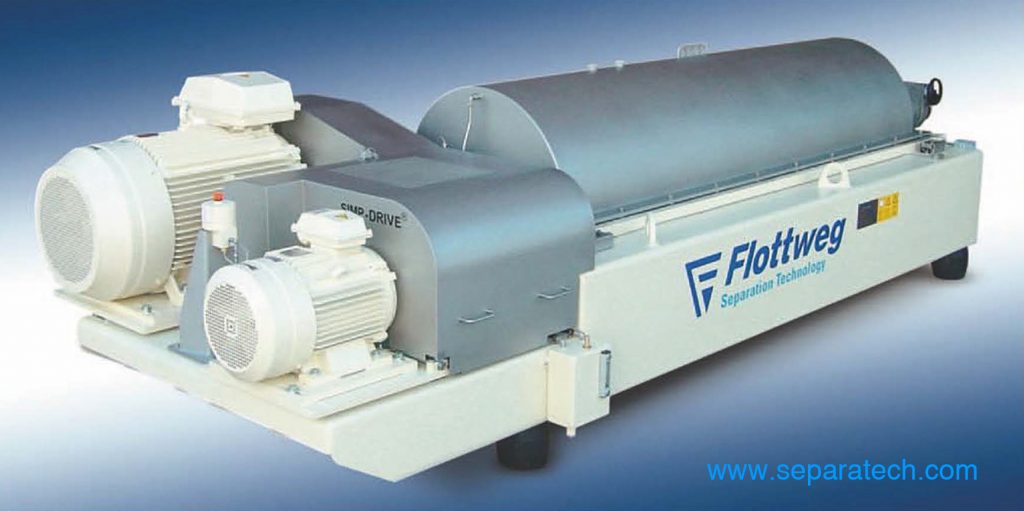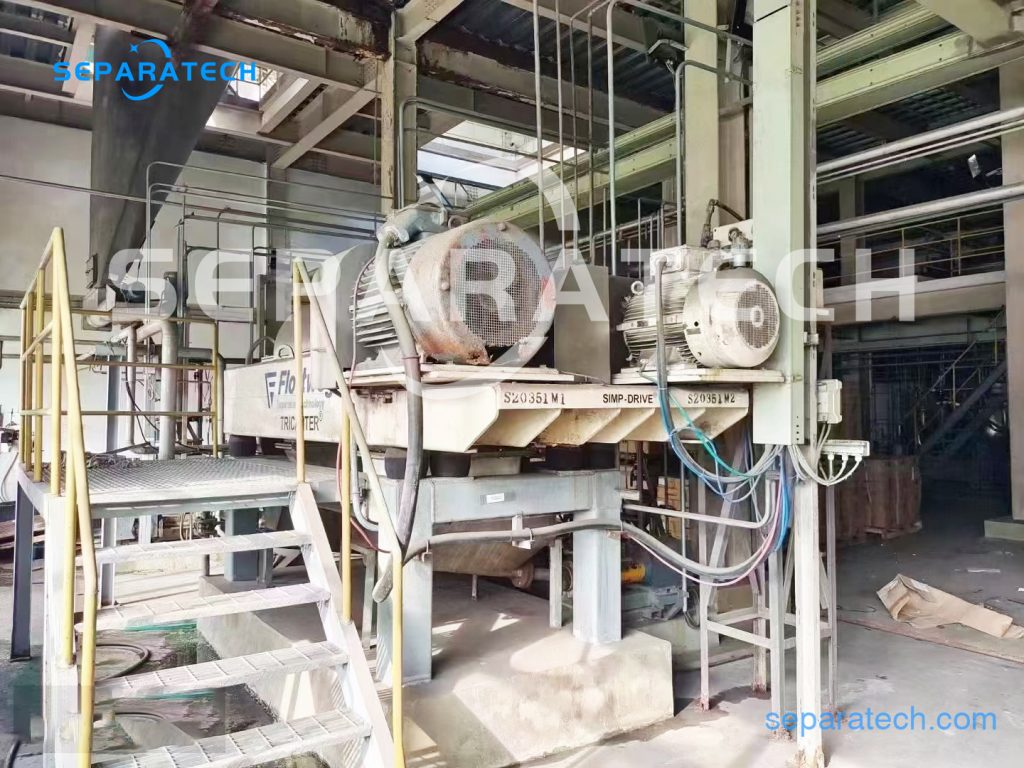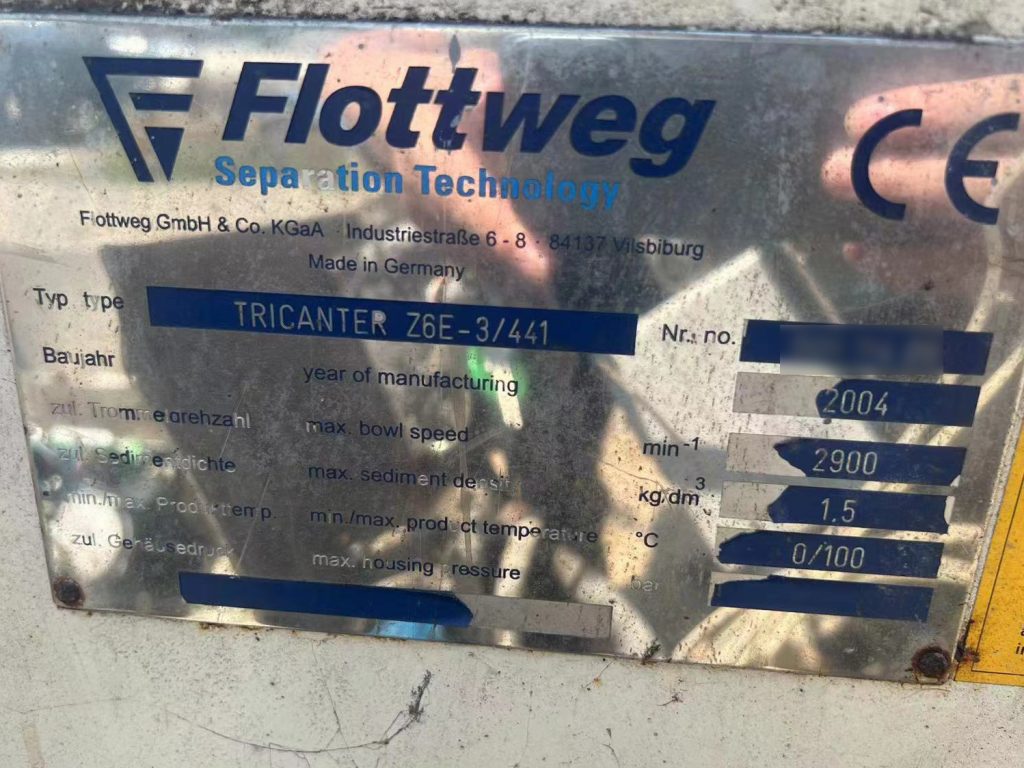Used Flottweg Tricanter Centrifuge Z6E-3/441

Tricanter Z6E-3/441 Technical specifications
Max. bowl speed: 2900 rpm
Max. sediment density: 1.5 Kg/dm3
Bowl diameter: 620 mm
Primary motor: 90 Kw
Manufacturing year: 2004
Applications of Tricanter Z6E-3/441:
The FLOTTWEG TRICANTER centrifuge enables three-phase separation, i.e. the simultaneous separation of two immiscible liquids with different densities and one solid phase, provided that the solid phase is the heaviest phase. The most important difference from a decanter is the separate discharge of the two liquid phases. The FLOTTWEG TRICANTER discharges the heavy liquid through an adjustable impeller under pressure and the light phase by gravity. The adjustable impeller allows adjusting the separation zone and degree of separation within the machine during operation. This optimizes purity of the liquids and may possibly eliminate downstream equipment.
Starch has been produced from various feedstocks for quite some time. The desire fora broad range of end products coupled with stronger environ-mental regulations, forces producers to look for the most effective and economic processing equipment available. Utilizing the FLOTTWEGTRICANTER to separate A-starch, pentosans, and gluten/B-starch into 3 distinct fractions is the most effective and economic way to process wheat flour into its by-products.
ADJUSTABLE IMPELLER
• The variable impeller can be adjusted during ongoing operation
• Optimum adaptation to changed conditions (product property in the feed)
• Perfect separating properties are achieved, for an optimum product result
• Exact and variable setting of the pond depth is possible by changing the weir disc diameter
• Automation is possible
SIMP DRIVE
• High efficiency due to consistently high dry substance value (DS = the higher this value, the dryer the separated solid)
• High throughput performance due to high bowl speed and precisely adjusted differential speed
• Simple display and regulation of the scroll torque including overload protection
• The scroll speed and differential speed can be controlled easily, because they are independent from one another


